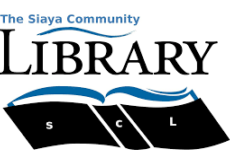Policies and Procedures
At Siaya Community Library, we are guided by a set of robust policies and procedures that ensure accountability, transparency, and excellence in our operations. These policies are designed not only to govern our day-to-day activities but also to equip the library with the foundation necessary for prosperity and continuity. By adhering to these guidelines, we ensure that the library remains a resourceful, vibrant space for future generations. These policies provide a clear framework for the library’s operations, so that anyone who comes next to manage the resource center can uphold its mission and function to its fullest potential.
1. Governance and Leadership Policy
- Guideline for Board Governance: Defines roles and responsibilities of the board, ensuring strategic oversight and accountability.
- Guideline for Ethics and Conduct: Outlines ethical principles for staff, volunteers, and leadership to maintain integrity.
- Guideline for managing conflict of Interest: Ensures decisions are made in the library’s best interest, free from personal gain.
2. Financial Management Policy
- Guideline for Budgeting and Financial Planning: Establishes procedures for annual and multi-year financial planning aligned with goals.
- Procedure for Procurement: Ensures transparent and competitive processes for acquiring goods and services.
- Guideline for Donor Funds Management: Tracks and manages donor contributions with compliance and reporting.
- Procedure for Auditing: Conducts regular internal and external audits to ensure financial transparency.
- Guideline for Maintaining Financial Reserves: Maintains reserves for sustainability during funding gaps.
3. Project Management Policy
- Procedure for Project Lifecycle Management: Outlines all project stages, from initiation to closure.
- Procedure for Risk Management: Identifies and mitigates risks in projects and operations.
- Procedure for Monitoring and Evaluation: Tracks project outcomes and long-term impacts.
- Guideline for Community Engagement: Promotes participatory approaches in planning and implementation.
4. Human Resources Policy
- Procedure for Recruitment: Ensures inclusive and fair hiring practices.
- Guideline for Performance Management: Provides for evaluations, feedback, and professional development.
- Guideline for Grievance and Whistleblower Protection: Offers safe reporting mechanisms for workplace issues.
- Guideline for Engagement of Volunteers: Defines recruitment, roles, and support for volunteers.
5. Service Delivery Policy
- Procedure for Beneficiary Selection: Ensures fair and transparent selection criteria for program beneficiaries.
- Guideline for Quality Assurance: Sets standards for effective program delivery.
- Procedure for Partnership: Establishes criteria for collaboration with organizations and stakeholders.
6. Communication and Branding Policies
- Guideline for Social Media and Communication: Guides consistent and ethical messaging across platforms.
- Guideline for Branding: Maintains a unified visual identity and messaging for the library.
7. Data Management Policy
- Guideline for Data Protection: Complies with legal standards to safeguard beneficiary and donor data.
- Guideline for Knowledge Management: Promotes documentation and sharing of lessons learned for improvement.
8. Impact Assessment Policy
- Procedure for Impact Reporting: Measures and reports community benefits through qualitative and quantitative data.
- Guideline for Sustainability: Focuses on long-term environmental, social, and economic impacts.
9. Compliance and Legal Policy
- Guideline for Compliance: Adheres to all national and international laws, including tax and NGO regulations.
- Guideline for Anti-Bribery and Corruption: Prevents fraud, corruption, and misuse of funds.
Implementation Strategies
We ensure the effectiveness of these policies through:
- Stakeholder Consultation: Engaging staff, community members, and beneficiaries in policy development.
- Training and Capacity Building: Regular training on policies and procedures.
- Regular Review: Scheduled reviews to keep policies relevant and up to date.
- Technology Integration: Leveraging tools like ERP systems for efficient implementation.
- Feedback Mechanisms: Collecting stakeholder feedback to improve processes.
